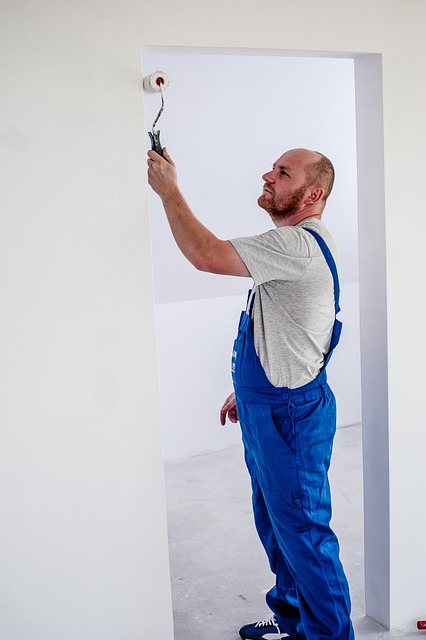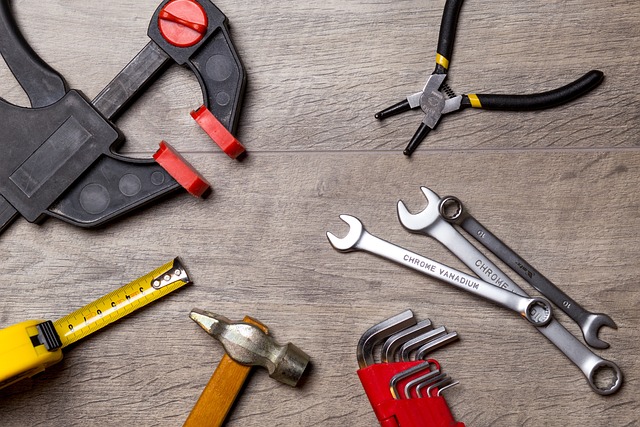1. Regularly change your HVAC system's filter every 1 to 3 months to maintain high air quality and energy efficiency.
2. A clogged or dirty filter can restrict airflow, impair system performance, and potentially lead to costly repairs due to component wear or damage.
3. Choose the right filter type for your system—options range from basic fiberglass filters to advanced HEPA filters that capture 99.97% of particulates.
4. Consult with HVAC repair professionals for advice on the best filter for your system, considering factors like size and airflow requirements.
5. Follow a simple maintenance routine: power down your system, locate the filter, remove and note the old one's specifications, install a new match, align it correctly, secure it back in place, and restart your HVAC system to ensure proper functioning.
6. Regular inspections and timely replacements are crucial for the longevity and efficiency of your HVAC system, reducing the need for frequent repairs.
7. Proper filter maintenance contributes to a more comfortable environment, healthier indoor air quality, and can lead to lower energy bills.
Maintaining your home’s HVAC system is pivotal for optimal performance, energy savings, and indoor air quality. A crucial aspect of this maintenance is regularly replacing your HVAC filters, a task that can significantly influence the efficiency and longevity of your system. This article delves into the importance of HVAC filters, offering insights on their impact on system performance, energy consumption, and air quality. We explore signs indicating when to replace your filter, the variety of filters available, and their specific effects on your HVAC’s efficiency. A detailed guide walks you through the process of replacing an HVAC filter, whether you prefer a DIY approach or professional assistance. Additionally, we discuss how dirty filters can compromise your system’s operation, the benefits of regular maintenance, and advanced filter technologies designed to enhance performance. To ensure you make informed decisions, we address common mistakes to avoid and provide a year-round guide for seasonal filter replacement. Also included are real-world examples, FAQs, and when to seek professional HVAC repair services for comprehensive system care. Understanding and implementing these practices can lead to noticeable improvements in your HVAC’s functionality and overall system performance.
- Understanding the Importance of HVAC Filters
- Signs Your HVAC Filter Needs Replacement
- Types of HVAC Filters and Their Impact on System Efficiency
- Step-by-Step Guide to Replacing an HVAC Filter
Understanding the Importance of HVAC Filters

Regular maintenance of your HVAC system is pivotal for maintaining optimal air quality and ensuring energy efficiency within your living or working space. Among the key components that necessitate attention during routine maintenance are the HVAC filters. These filters play a critical role in preventing dust, pollen, pet dander, and other airborne debris from circulating through your system and into your environment. Over time, as these contaminants build up on the filter, airflow is restricted, which can lead to decreased efficiency and even potential damage to your HVAC system. This is where the importance of timely replaces with new filters comes into play. By doing so, you not only enhance the performance of your HVAC unit but also protect its longevity. A well-maintained filter ensures that clean air flows freely throughout your space, reducing the need for frequent HVAC repair calls and promoting a healthier environment for everyone who occupies it. It’s advisable to inspect and replace your HVAC filters at regular intervals, typically every 1 to 3 months, depending on factors such as the type of filter, local environment, and the operational demands of your system. This proactive approach can significantly avert issues related to poor airflow and help maintain the overall health and efficiency of your HVAC system, ultimately contributing to lower utility bills and a more comfortable living or working space.
Signs Your HVAC Filter Needs Replacement

When your HVAC system is functioning optimally, it’s often due to a clean and efficient filter. However, over time, these filters can become clogged with dust, debris, and other airborne contaminants, which can significantly impact the performance of your HVAC system. To maintain energy efficiency and ensure proper airflow, it’s crucial to be vigilant about the condition of your HVAC filter. Here are some signs that indicate it’s time for a replacement:
A noticeable decrease in the quality of indoor air can signal that your filter is due for a change. Dust particles and other allergens can bypass a clogged filter, leading to a less healthy environment for you and your family. Additionally, if you observe an increase in utility bills without an evident change in usage patterns, it may be a sign of restricted airflow caused by a dirty filter, which forces your HVAC system to work harder to maintain the desired temperature. Regularly inspecting and replacing your HVAC filter as needed is a simple yet effective way to ensure your system’s longevity and performance. To avoid unexpected repairs or inefficiencies, consider scheduling regular HVAC repair services to replace filters proactively and keep your system running smoothly.
Types of HVAC Filters and Their Impact on System Efficiency

When it comes to maintaining optimal performance for your HVAC system, understanding the types of filters available and their impact on efficiency is crucial. HVAC repair professionals often recommend selecting the right filter based on the specific needs of your system and indoor environment. There are various types of filters, including fiberglass, washable filters, high-efficiency particulate air (HEPA) filters, electronic air cleaners, and UV light purification systems. Each type of filter performs differently in terms of efficiency and airflow resistance.
Fiberglass filters, for instance, are the most basic and provide a minimal barrier to particulates, which means they require less maintenance but also offer the least filtration. On the other hand, HEPA filters are renowned for their ability to capture up to 99.97% of airborne particles, including allergens like pollen and dust mites, making them ideal for allergy sufferers. However, due to their high efficiency, they can restrict airflow if not regularly replaced or cleaned. High-efficiency filters are particularly beneficial in improving overall system performance by ensuring cleaner air and preventing dirt and debris from accumulating on system components. Regular replacement or cleaning of HVAC filters as part of routine HVAC repair and maintenance is essential to maintain energy efficiency, prevent potential damage to the system, and extend its lifespan. Homeowners should consult with HVAC professionals to determine the best filter type for their system, considering factors such as filter size, airflow requirements, and personal preferences regarding indoor air quality. By doing so, they can maximize the performance of their HVAC system and minimize the need for costly repairs down the line.
Step-by-Step Guide to Replacing an HVAC Filter

Regular maintenance of your HVAC system is paramount for maintaining optimal performance and ensuring energy efficiency. A crucial component in this upkeep is regularly replacing the air filter, which plays a vital role in the overall functionality of the system. A clogged or dirty filter restricts airflow, leading to reduced system efficiency and potential damage to your HVAC unit. Here’s a step-by-step guide to safely and effectively replace your HVAC filter:
Begin by powering down your HVAC system and turning off the electricity to prevent any electrical hazards. Locate the filter, typically found behind the return air grille or on an adjacent wall within the main ductwork. Remove the filter cage or frame by unscrewing any visible fasteners. Take note of the filter size, as this is essential for purchasing a compatible replacement. Once you have the correct size, proceed to your local hardware store or an online retailer to acquire a new filter.
When installing the new filter, ensure it fits snugly within the filter cage and that the airflow direction is aligned with the arrows indicated on the filter. Replace the cage or frame around the filter, securing it back into place. Restore the power to your HVAC system and run the unit to confirm that the new filter is properly installed. For optimal performance, it’s recommended to inspect and replace the filter every 1 to 3 months, depending on the usage of your HVAC system and local environmental factors. Regularly maintaining your HVAC filter through this process contributes significantly to the longevity and efficiency of your HVAC repair needs.
Ensuring the health of your HVAC system is paramount for maintaining a comfortable and efficient living environment. As discussed, worn filters can significantly hinder system performance, leading to higher energy costs and potential damage over time. Recognizing the signs of a clogged filter, understanding the array of filters available, and following a clear guide for replacement are key steps in upkeep. By regularly replacing your HVAC filter, you not only prolong the life of your system but also enhance its efficiency. For professional assistance with HVAC repair or further guidance on maintaining your system, consult certified technicians who can provide tailored solutions to meet your needs. With consistent care and attention, your HVAC system will continue to operate at peak performance, ensuring your home remains a haven of comfort all year round.
